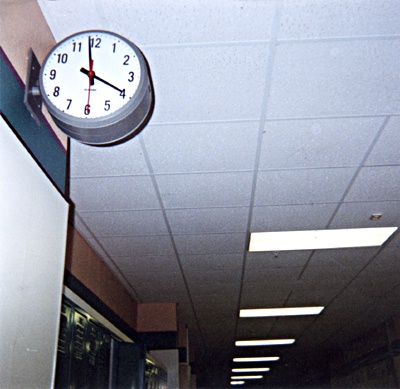All Nonfiction
- Bullying
- Books
- Academic
- Author Interviews
- Celebrity interviews
- College Articles
- College Essays
- Educator of the Year
- Heroes
- Interviews
- Memoir
- Personal Experience
- Sports
- Travel & Culture
All Opinions
- Bullying
- Current Events / Politics
- Discrimination
- Drugs / Alcohol / Smoking
- Entertainment / Celebrities
- Environment
- Love / Relationships
- Movies / Music / TV
- Pop Culture / Trends
- School / College
- Social Issues / Civics
- Spirituality / Religion
- Sports / Hobbies
All Hot Topics
- Bullying
- Community Service
- Environment
- Health
- Letters to the Editor
- Pride & Prejudice
- What Matters
- Back
Summer Guide
- Program Links
- Program Reviews
- Back
College Guide
- College Links
- College Reviews
- College Essays
- College Articles
- Back
Year-Round Schools
Imagine, going to school for 4 to 5 weeks then getting a week off every month, for the entire year. Only 5 percent of schools use the opportunity to have a modified calendar like this (Hess).
Remember, this modified calendar does include having a week off every month. Students are losing almost a year’s worth of education during the summer while year-round schools give the same amount of break time over a spread out time period. All schools should convert to a year-round calendar because teachers feel the calendar gives them more effective teaching time, a modified calendar offers more benefits to effective learning, and students feel that they have more interest in learning.
Using a modified calendar in a school district offers more benefits over a traditional calendar. Roberta Bondar Public School in Ontario is one of many schools in Canada using a modified calendar. They start school in early August, so the weeks gained by starting school so early are used throughout the school year. “The five holiday weeks gained by starting in August are spread out; we have a two-week break in October, a three-week winter break, a week in February and a two-week spring break in March. Staff members and students also enjoy the month of July off” (Shields et al). Roberta Bondar has also gone as far as modifying the school day as well. They have replaced the traditional lunch and 2 recesses with two forty-five minute nutritional periods, reducing time switching between classes. It is true that, the modified school day has added four to six weeks of instructional time to the school year (Shields). This calendar that Roberta Bondar is using is more effective than a traditional calendar.
In addition, when schools make the switch from a traditional school calendar to a modified calendar students feel that what they are learning is more effective. Based on research done by Jennifer Davis students feel that having a modified calendar is more productive in their learning and classes. The studies done at eight schools using the modified calendar have shown much appreciation for the amount of time added to the year. Consequently students believe that the modified school day and calendar, “leaves no question unanswered” (Davis). Not only does it offer more instructional time with a teacher a modified calendar benefits kids in a low-income household. Disadvantaged kids are more likely to experience summer learning loss over their more advantaged peers, who are more likely to read or attend summer camps (Hess). Therefore, the achievement gap between urban and minority children could be smaller if we use the advantage of a modified calendar.
Unquestionably teachers have greater passion in their jobs when they have the time to reflect and review on how their teaching is effective. A traditional school calendar only gives teachers 2 days to think about what they are teaching. Teachers at Green Meadow Elementary School created a three year plan to modify the school year for the most effective. After the switch teachers felt more empowered in the workplace based on their ownership in the school (Haser and Nasser). “One teacher we spoke with mentioned how much easier it is to teach a 90-minute class than a 50-minute one precisely because she was able to take longer to explain topics and longer for the students to work with and internalize the material” (Davis). Clearly, having more class time to teach a subject is more effective because you have more time to go in depth in the topic.
All schools should convert to a year-round calendar because teachers feel the calendar gives them more effective teaching time, a modified calendar offers more benefits to effective learning, and students feel that they have more interest in learning. 95% of children are being robbed of the opportunity to have a more effective school calendar (Hess). Children are being taught for nine months and losing everything they have learned over summer break. The only thing school districts need is a couple voices trying to perfect the school calendar, and that could be you. Now knowing that you could have gone through school with this advantage, do something for this generation’s school experience.

Similar Articles
JOIN THE DISCUSSION
This article has 0 comments.

This piece was written in an 8th grade English class to express my feelings about year-round school. Many people can't except change in the already hated subject of school so when people bring up the topic of year-round school they immediately hate it. But I wanted to shed light on this issue and made people truely understand it.